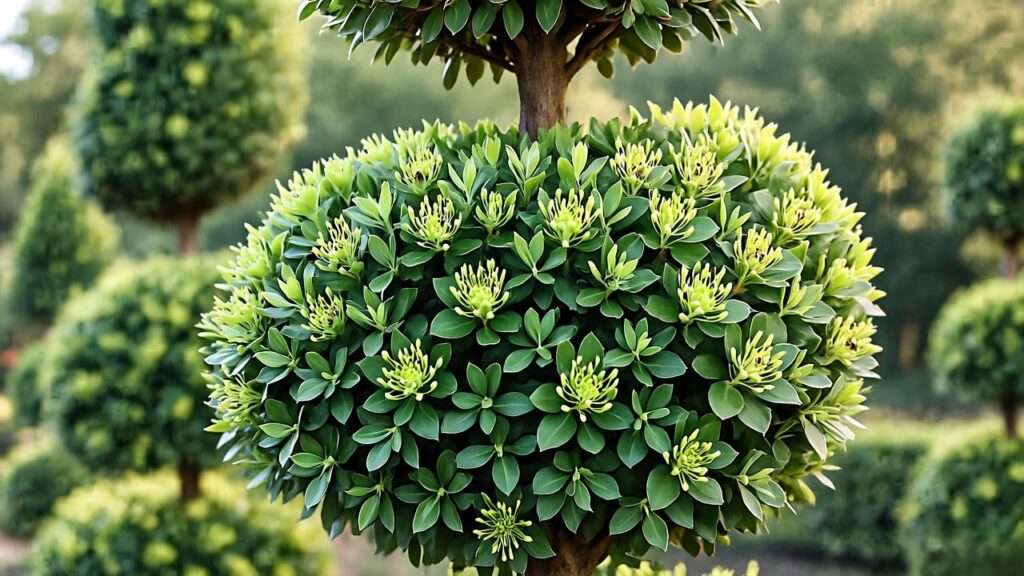Imagine stepping into a garden where lush, sculpted greenery steals the show, instantly elevating the space with elegance and charm. The Eugenia topiary plant, with its glossy leaves and versatile shapes, is the secret to creating that wow factor in your home or garden. Whether you’re a beginner or a seasoned gardener, mastering the care of a Eugenia topiary plant can transform any space into a masterpiece. In this comprehensive guide, crafted with over a decade of horticultural expertise, we’ll walk you through everything you need to know to grow, shape, and maintain a vibrant Eugenia topiary. From planting to pruning, we’ve got you covered with expert tips to ensure your topiary thrives year-round. 🌞
What is a Eugenia Topiary Plant? 🌳
Overview of the Eugenia Topiary
The Eugenia topiary plant, scientifically known as Syzygium paniculatum (also called Eugenia myrtifolia), is an evergreen shrub prized for its dense, glossy foliage. Native to Australia, this plant’s compact growth and adaptability make it a favorite for sculpting into stunning topiary shapes like balls, cones, or spirals. Its small, vibrant leaves and occasional clusters of white flowers or red berries add to its ornamental appeal.
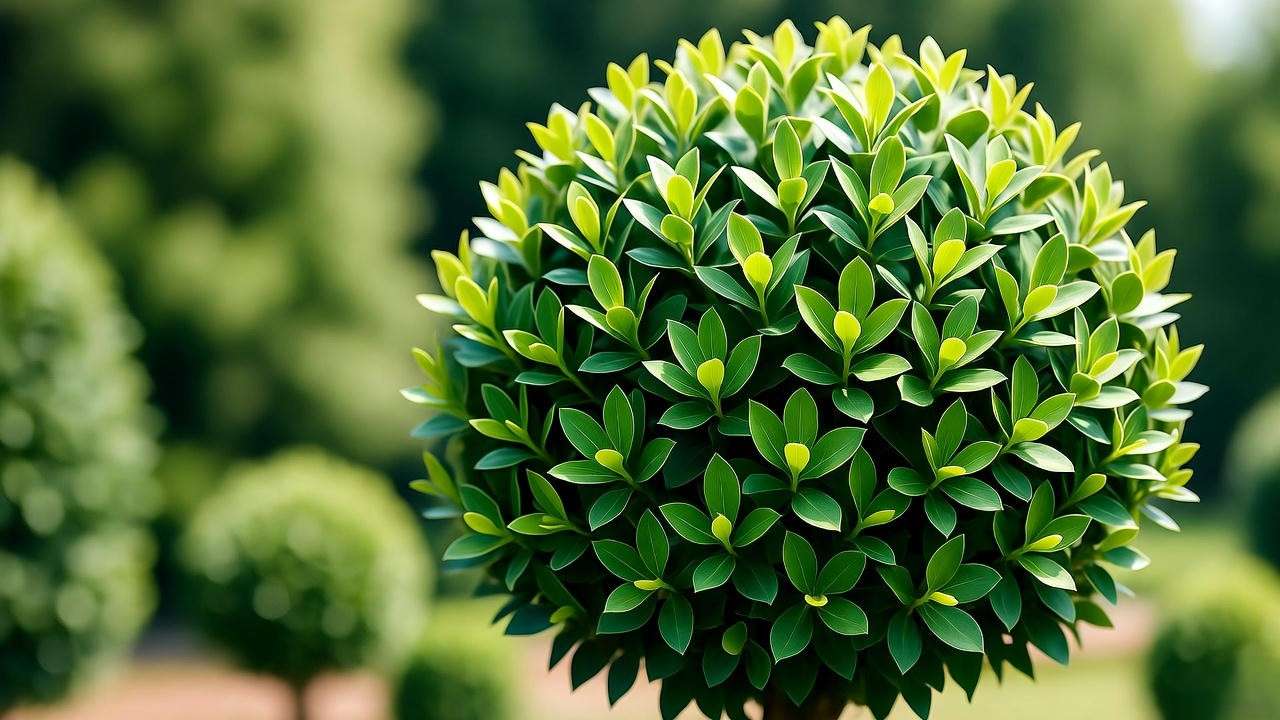
Why Choose a Eugenia Topiary? 😍
- Aesthetic Appeal: A well-maintained Eugenia topiary adds sophistication to gardens, patios, or indoor spaces.
- Versatility: It thrives in containers, as a hedge, or as a standalone feature in formal or modern landscapes.
- Benefits: Beyond beauty, it purifies indoor air and requires minimal care with the right techniques.
Whether you’re aiming for a classic French garden vibe or a sleek, contemporary look, the Eugenia topiary delivers.
Understanding the Needs of Your Eugenia Topiary 🌞
Ideal Growing Conditions
To thrive, your Eugenia topiary needs the right environment:
- Light: Full sun (6+ hours daily) is ideal, but it tolerates partial shade. Place outdoor plants in bright spots and indoor ones near south-facing windows.
- Temperature: Best suited for USDA zones 10-11, it prefers 60-85°F. In colder climates, bring potted topiaries indoors during frost.
- Soil: Use well-draining, slightly acidic soil (pH 5.5-6.5). A mix of peat, perlite, and compost works well.
Watering Needs 💧
Eugenia topiaries like consistent moisture but hate soggy roots. Water when the top inch of soil feels dry, typically every 5-7 days for outdoor plants and weekly for indoor ones. Watch for signs like yellowing leaves (overwatering) or wilting (underwatering).
Nutrient Requirements 🌿
Feed your topiary with a balanced, slow-release fertilizer (10-10-10) every 4-6 weeks during spring and summer. Avoid over-fertilizing, as it can lead to leaf burn or weak growth. Organic options like compost tea are great for eco-conscious gardeners.
Planting Your Eugenia Topiary: Step-by-Step Guide 🌱
Choosing the Right Plant
Select a healthy Eugenia from a reputable nursery. Look for vibrant green leaves, no yellowing, and no signs of pests like webbing or sticky residue. Decide between container planting (ideal for patios or indoors) or ground planting (perfect for gardens).
Planting Process
- Timing: Plant in spring or early fall for optimal root establishment.
- Steps:
- Dig a hole twice as wide and as deep as the root ball.
- Mix soil with compost for better drainage and nutrients.
- Place the plant, ensuring the root crown is level with the soil surface.
- Backfill, tamp gently, and water thoroughly.
- Add a 2-inch layer of organic mulch (like bark) to retain moisture.
- Expert Tip: For potted topiaries, choose a container with drainage holes to prevent root rot.
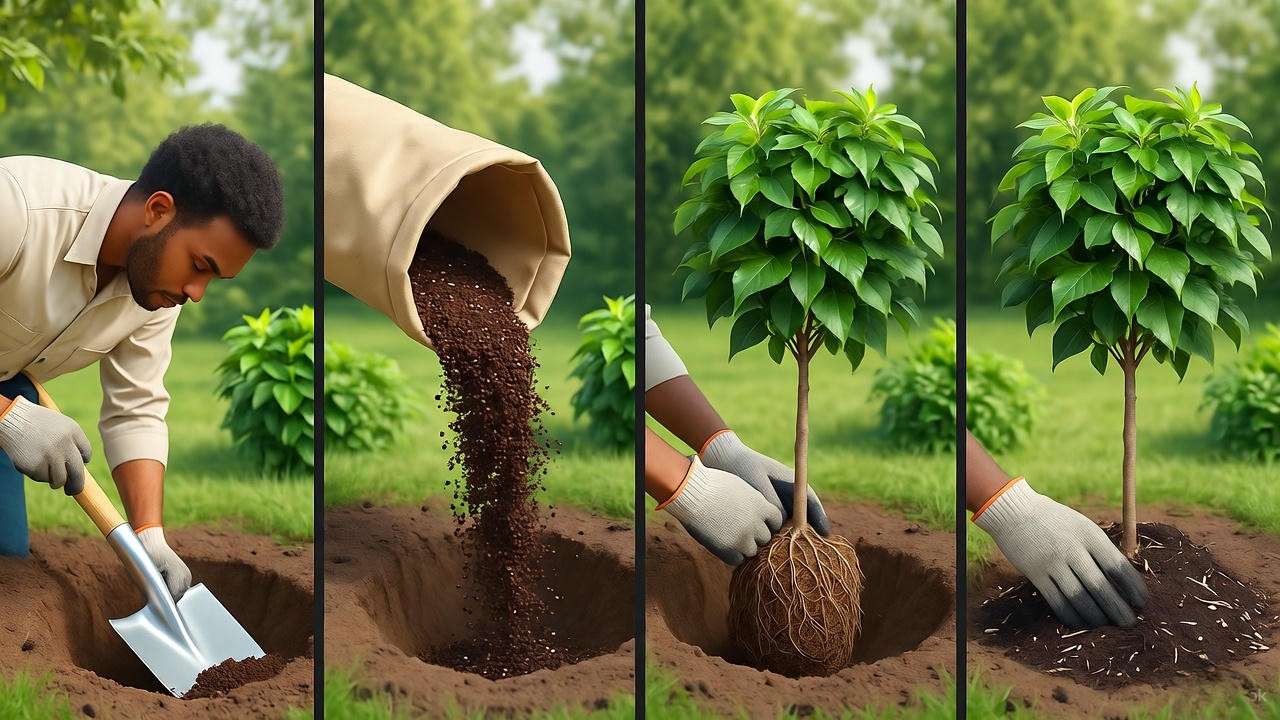
Shaping and Pruning Your Eugenia Topiary ✂️
Tools You’ll Need 🛠️
Invest in quality tools for precise cuts:
- Sharp pruning shears (disinfected with alcohol to prevent disease spread).
- Gardening gloves to protect your hands.
- A small hand saw for thicker branches.
Pruning Techniques
- Timing: Major shaping is best in late winter or early spring before new growth. Maintenance trims can happen year-round.
- Methods:
- Classic Shapes: For balls, cones, or spirals, start with a wire frame as a guide. Trim lightly and frequently to refine the shape.
- Freeform Designs: Let your creativity shine with unique patterns, but keep cuts balanced to avoid stress.
- Maintenance Pruning: Remove dead or crossing branches to boost air circulation and density.
- Expert Tip: Always cut at a 45-degree angle just above a leaf node to encourage healthy regrowth.
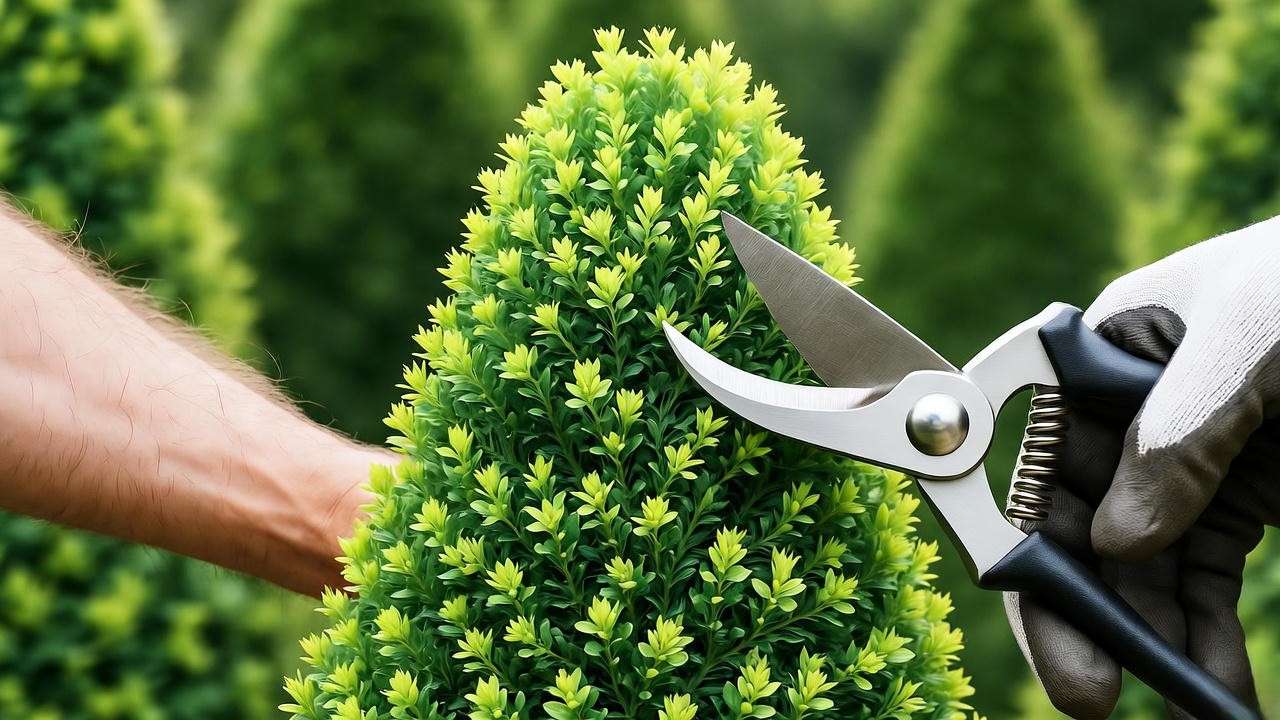
Common Mistakes to Avoid 🚫
- Over-Pruning: Removing too much foliage at once weakens the plant. Trim no more than 20% at a time.
- Dull Tools: Blunt shears tear leaves, inviting disease. Keep tools sharp and clean.
- Ignoring Shape: Inconsistent trimming leads to uneven growth. Stick to a regular schedule.
Watering and Feeding Your Eugenia Topiary 💦
Watering Best Practices
- Frequency: Water outdoor topiaries every 5-7 days in warm months, less in cooler seasons. Indoor plants may need weekly checks.
- Method: Use drip irrigation or a watering can to target the root zone. Avoid wetting foliage to prevent fungal issues.
- Expert Insight: Test soil moisture by inserting your finger 1-2 inches deep. If dry, water; if moist, wait.
Fertilizing for Success
- Types: Use a balanced 10-10-10 fertilizer or organic alternatives like fish emulsion.
- Schedule: Apply every 4-6 weeks from spring to early fall. Stop in winter to respect the plant’s dormancy.
- Application: Spread fertilizer evenly around the root zone, avoiding direct contact with the stem. Water after to help absorption.
Pest and Disease Management 🐞
Common Pests
Eugenia topiaries can attract:
- Aphids: Small, sap-sucking insects causing curled leaves. Treat with neem oil or insecticidal soap.
- Scale Insects: Hard, waxy pests on stems. Remove with a soft brush and soapy water.
- Spider Mites: Tiny pests causing stippled leaves. Increase humidity and use miticides if needed.
- Prevention: Inspect weekly, ensure good air circulation, and avoid overwatering.
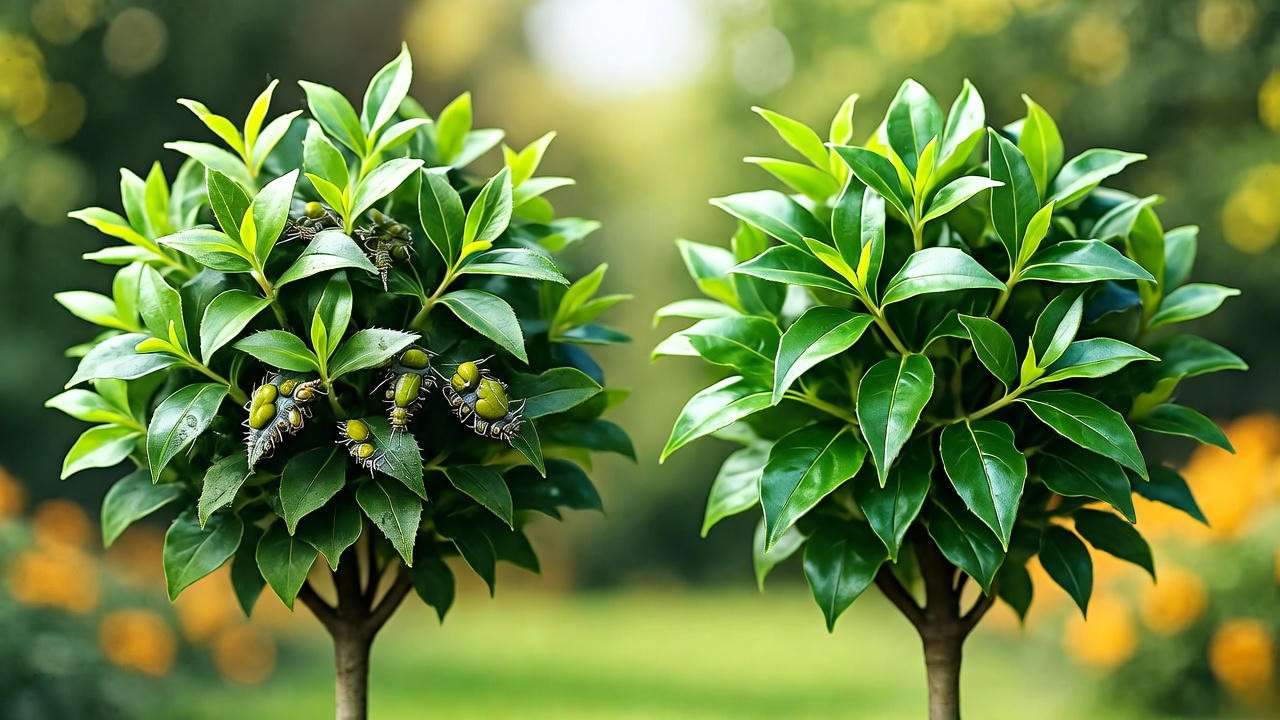
Diseases to Watch For
- Root Rot: Caused by soggy soil. Improve drainage and reduce watering.
- Leaf Spot: Fungal spots from wet foliage. Use a copper-based fungicide and prune affected areas.
- Powdery Mildew: White coating on leaves. Improve air flow and apply sulfur-based treatments.
- Expert Tip: Quarantine new plants to prevent introducing pests to your garden.
Seasonal Care for Eugenia Topiaries 📅
Spring and Summer Care ☀️
- Growth Boost: Increase watering and fertilizing to support active growth.
- Heat Protection: Add mulch to keep roots cool and consider shade cloth in extreme heat.
- Pruning: Light trims every 4-6 weeks to maintain shape.
Fall and Winter Care ❄️
- Dormancy Prep: Reduce watering and stop fertilizing as growth slows.
- Cold Protection: Move potted topiaries indoors or cover outdoor ones with frost cloths in zones below 10.
- Indoor Care: Place near a bright window and mist occasionally to maintain humidity.
Troubleshooting Common Eugenia Topiary Problems 🔍
Even with the best care, your Eugenia topiary plant may face challenges. Here’s how to diagnose and fix common issues to keep it thriving.
Yellowing Leaves
- Causes: Overwatering, nutrient deficiencies, or poor drainage can turn leaves yellow.
- Solutions:
- Check soil moisture and reduce watering if soggy. Ensure pots have drainage holes.
- Test soil for nutrient levels; apply a balanced fertilizer if deficient in nitrogen.
- Improve drainage with perlite or sand in the soil mix.
- Expert Tip: If yellowing persists, inspect roots for rot and trim damaged sections.
Drooping or Wilting
- Causes: Underwatering, root issues, or transplant shock are common culprits.
- Solutions:
- Water thoroughly if soil is dry, ensuring even moisture.
- For recent transplants, maintain consistent care and avoid moving the plant frequently.
- Check for root-bound conditions in potted topiaries; repot if needed.
- Expert Insight: Gradual watering adjustments prevent stress—avoid sudden drenching after drought.
Stunted Growth
- Causes: Insufficient light, poor soil quality, or pest damage can slow growth.
- Solutions:
- Relocate to a brighter spot with 6+ hours of sunlight.
- Enrich soil with compost or a slow-release fertilizer.
- Inspect for pests like spider mites and treat promptly.
- Prevention: Regular feeding and proper light exposure keep growth robust.
Creative Ideas for Displaying Your Eugenia Topiary 🎨
A Eugenia topiary plant is more than just a plant—it’s a living sculpture! Here are creative ways to showcase its beauty.
Garden Design Inspiration
- Formal Gardens: Pair your Eugenia topiary with boxwoods or roses for a classic, symmetrical look. Create a pathway lined with matching topiary balls for elegance.
- Modern Landscapes: Use geometric shapes like cubes or spirals in sleek, minimalist containers for a contemporary vibe.
- Mixed Borders: Combine with colorful perennials like lavender or salvia for a vibrant contrast.
Indoor and Patio Displays
- Styling Tips: Choose decorative ceramic or terracotta pots to complement your topiary’s shape. Elevate on a plant stand for added drama.
- Placement Ideas:
- Entryways: A pair of cone-shaped topiaries flanks a front door beautifully.
- Balconies: Compact topiaries in stylish pots maximize small spaces.
- Living Rooms: Place near a window for a green focal point.
- Expert Tip: Rotate potted topiaries every few weeks to ensure even light exposure.
Event Decor
- Weddings and Parties: Use small Eugenia topiaries as table centerpieces or line event aisles with larger ones.
- Seasonal Displays: Wrap with fairy lights or ribbons for festive holiday decor.
- Example: Create a winter-themed topiary by adding faux snow or ornaments for a cozy, festive touch.
Expert Tips for Long-Term Success 🌟
With over 15 years of experience in ornamental horticulture, I’ve compiled these pro tips to ensure your Eugenia topiary thrives for years:
- Regular Monitoring: Check weekly for pests, shape irregularities, or signs of stress. Early detection saves plants!
- Repotting Potted Topiaries: Every 2-3 years, repot into a slightly larger container with fresh soil to prevent root-binding.
- Steps: Gently loosen roots, trim damaged ones, and use a well-draining soil mix.
- Propagating Eugenia: Grow new plants from cuttings for a budget-friendly way to expand your collection.
- How-To: Take 4-6 inch stem cuttings in spring, dip in rooting hormone, and plant in moist peat. Keep in indirect light until rooted (4-6 weeks).
- Sustainability Tip: Use collected rainwater or homemade compost to reduce environmental impact while nourishing your topiary.
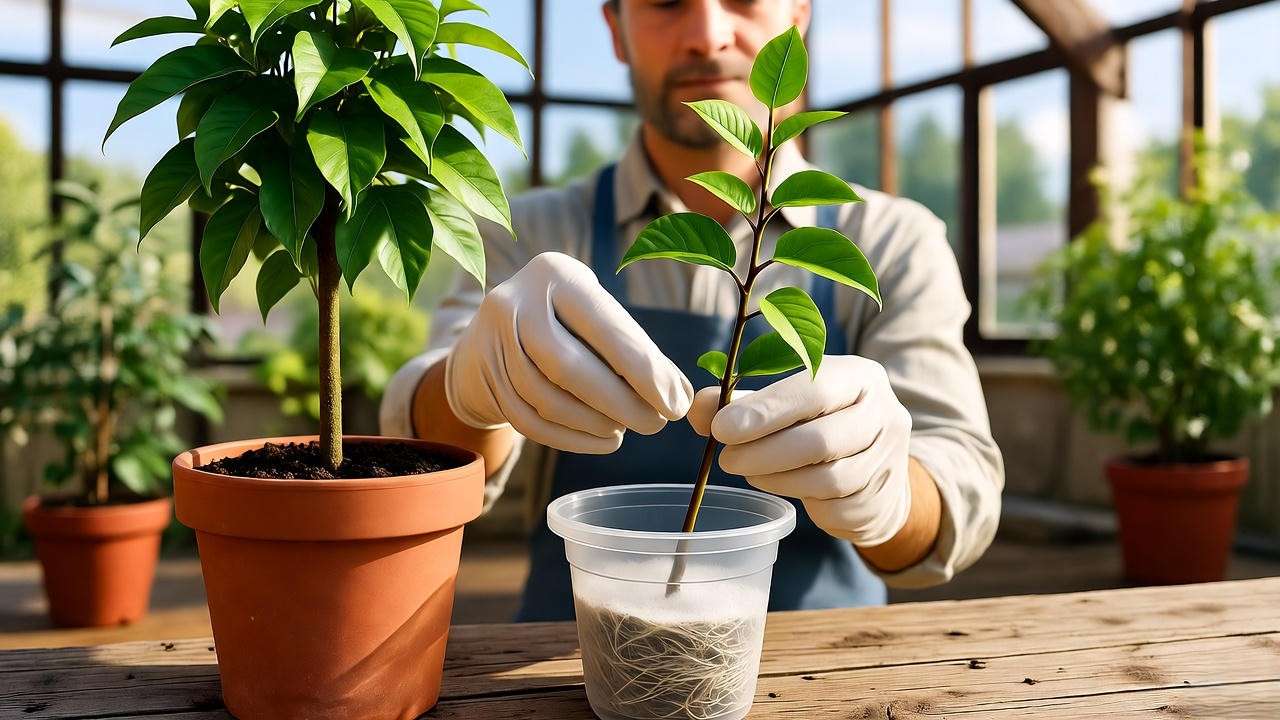
FAQs About Eugenia Topiary Care ❓
Here are answers to common questions, backed by horticultural research and hands-on experience:
- How often should I prune my Eugenia topiary?
Prune lightly every 4-6 weeks during the growing season to maintain shape. Major shaping is best in late winter. - Can Eugenia topiaries grow indoors year-round?
Yes, with bright light (near a south-facing window) and proper humidity. Mist occasionally in dry indoor conditions. - What’s the best way to protect my topiary from pests?
Inspect regularly, use neem oil for early infestations, and ensure good air circulation to deter pests. - How do I revive a struggling Eugenia topiary?
Identify the issue (e.g., watering, light, pests), adjust care, and prune dead growth to encourage recovery. - Are Eugenia topiaries pet-friendly?
Eugenia plants are mildly toxic if ingested. Keep out of reach of pets and children. - How long does it take to shape a topiary?
Depending on size and complexity, shaping can take 1-3 seasons with regular trimming.
Conclusion: Transform Your Space with a Eugenia Topiary 🌿
Your Eugenia topiary plant is a living work of art, capable of turning any garden, patio, or indoor space into a stunning showcase of greenery. By following this guide—covering planting, pruning, watering, pest control, and creative display ideas—you’re equipped to grow a healthy, vibrant topiary that impresses year-round. Start today by selecting a healthy plant, setting up the right conditions, and sculpting your vision. Have a topiary tip or photo to share? Drop it in the comments below or explore our other plant care guides for more inspiration! 🌱

